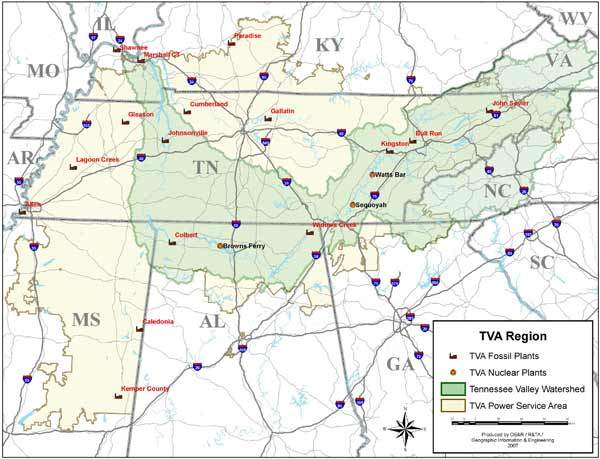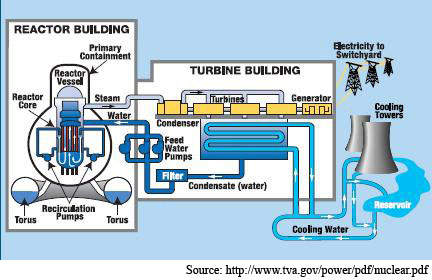The much-delayed 1,150MW Watts Bar 2 nuclear power plant in Tennessee, US, became operational in October 2016. It is the nation’s first nuclear reactor to complete post-Fukushima safety upgrades.
The Watts Bar Unit 2 pressurised water reactor (PWR) cost the Tennessee Valley Authority (TVA) around $2.5bn. Siemens made a $170m refurbishment and upgrade of the turbine island. It supplied one new high-pressure (HP) turbine and three new low-pressure (LP) turbines.
However, TVA later approved the completion of the plant to meet the growing energy needs of the region. Construction resumed in October 2007 and the construction permit was extended in 2008, from 2010 to 2013.
Watts Bar 2 is expected to serve 650,000 homes in the Tennessee Valley area. The US Nuclear Regulatory Commission (NRC) granted an operating license for Watts Bar 2 nuclear power plant in October 2015. The $4.7bn Watts Bar 2 project employed approximately 3,200 workers during construction and created 250 permanent jobs for the operation of the plant.
Plant history
TVA began building nuclear power plants in the 1960s, in response to the growing prosperity of the Tennessee Valley and the rising demand for power.
Watts Bar is TVA’s third nuclear power plant. The company started building Watts Bar 1 and 2, but in 1985 a large number of deficiencies in the plants were identified. This was shortly before the WBN Unit 1 license was to be issued by the NRC, and the commission asked for TVA’s plans to address the deficiencies. These were found in the operating and construction activities, as well as in the company’s other nuclear facilities.
In response, TVA developed a nuclear performance plan (NPP) to address a wide variety of material, design and programmatic deficiencies. Unit 2 construction was suspended around that time, with major structures in place and equipment such as reactor coolant system piping installed.
Watts Bar Unit 1 was completed in 1996 and has a Westinghouse PWR that can generate 1,167MW. In September 2000, the unit set a record for continuous operation of similar TVA reactors. Unit 1 operated for 512 consecutive days, breaking the old mark of 468 days set at TVA’s Sequoyah Unit 1 in February 2000. Watts Bar is also used for tritium production for nuclear weapons.
Technology
The PWR’s fission uranium fuel rods heat the water in the primary coolant loop. At Watts Bar, the hot water in the secondary loop is pumped into a steam generator to produce steam at approximately 300ºC (580ºF) for the main turbine and generator. Steam from the turbine is cooled in a condenser and the water is pumped back to the reactor.
Plant details
The Watts Bar 2 generator is a completely advanced reactor, including a RIGI-FLEX™ rewind of the stator and new retaining rings. The exciter rotor was also refurbished.
There are six new moisture separator re-heaters and more than 40,000 individual replacement parts. The primary loop testing and hot functional testing began in 2014 with fuel loading beginning in late 2015. Unit 2 is operationally the same as Unit 1. It has the same systems, equipment, operating procedures and technical specifications. However, there are some licensing and design differences between the units due to changes in regulatory requirements.
TVA was criticised by anti-nuclear groups for basing its Unit 2 estimates of costs and schedules on a $20m study done in part by Bechtel Power Corp and other contractors that worked on the reactor’s construction.
Nation’s largest public power provider
TVA is now the nation’s largest public power provider. In 2004, TVA nuclear plants generated a record 47,075,964MWh of electricity. In May 2005, TVA developed an index of 20 performance indicators for improved plant reliability and performance. Approximately 6.9GW (30%) of TVA’s power supply comes from its three nuclear plants: Browns Ferry, near Athens, Alabama; Sequoyah, Soddy-Daisy, Tennessee; and Watts Bar.










